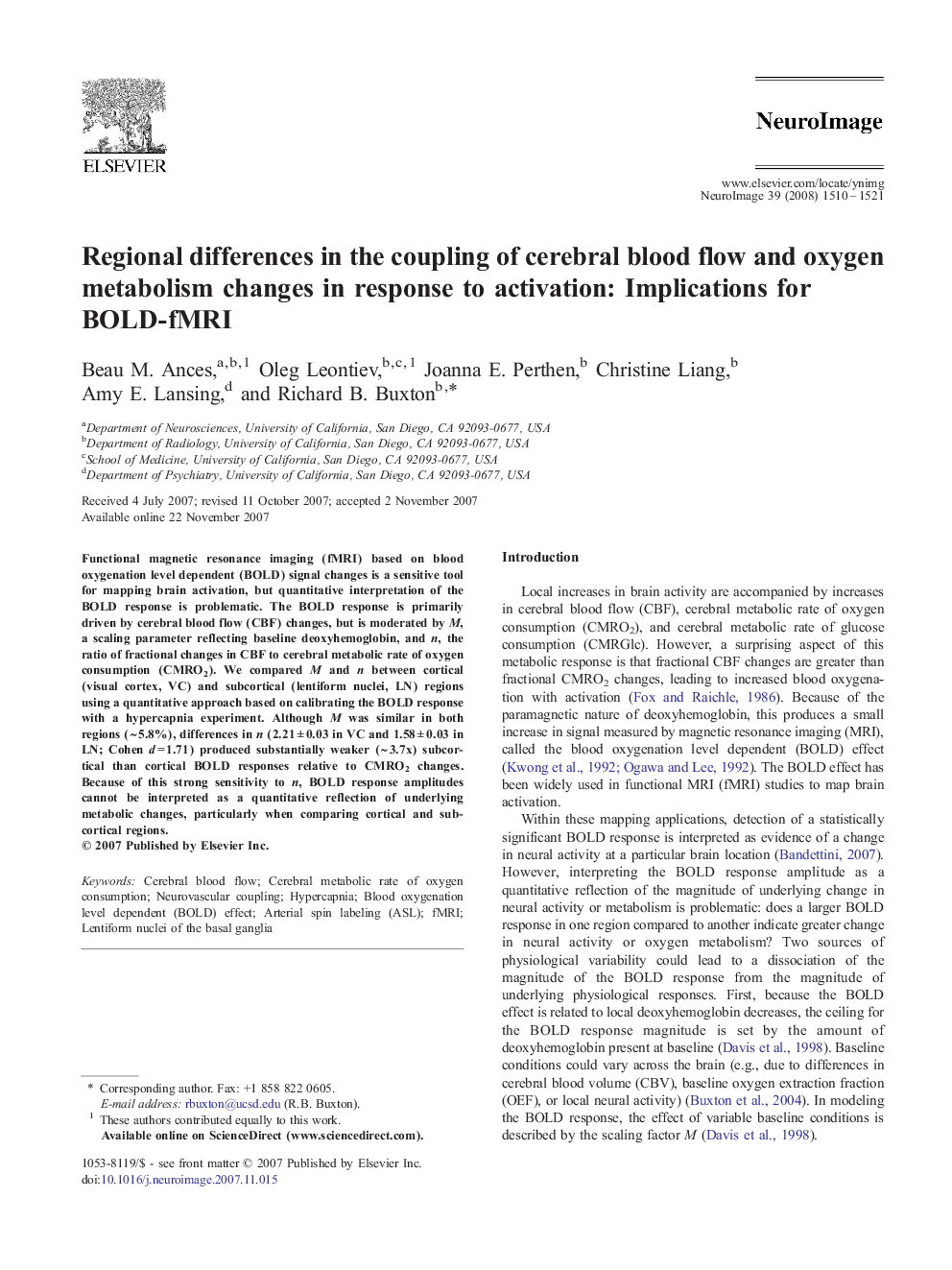| Article ID | Journal | Published Year | Pages | File Type |
|---|---|---|---|---|
| 3073366 | NeuroImage | 2008 | 12 Pages |
Functional magnetic resonance imaging (fMRI) based on blood oxygenation level dependent (BOLD) signal changes is a sensitive tool for mapping brain activation, but quantitative interpretation of the BOLD response is problematic. The BOLD response is primarily driven by cerebral blood flow (CBF) changes, but is moderated by M, a scaling parameter reflecting baseline deoxyhemoglobin, and n, the ratio of fractional changes in CBF to cerebral metabolic rate of oxygen consumption (CMRO2). We compared M and n between cortical (visual cortex, VC) and subcortical (lentiform nuclei, LN) regions using a quantitative approach based on calibrating the BOLD response with a hypercapnia experiment. Although M was similar in both regions (∼ 5.8%), differences in n (2.21 ± 0.03 in VC and 1.58 ± 0.03 in LN; Cohen d = 1.71) produced substantially weaker (∼ 3.7x) subcortical than cortical BOLD responses relative to CMRO2 changes. Because of this strong sensitivity to n, BOLD response amplitudes cannot be interpreted as a quantitative reflection of underlying metabolic changes, particularly when comparing cortical and subcortical regions.
